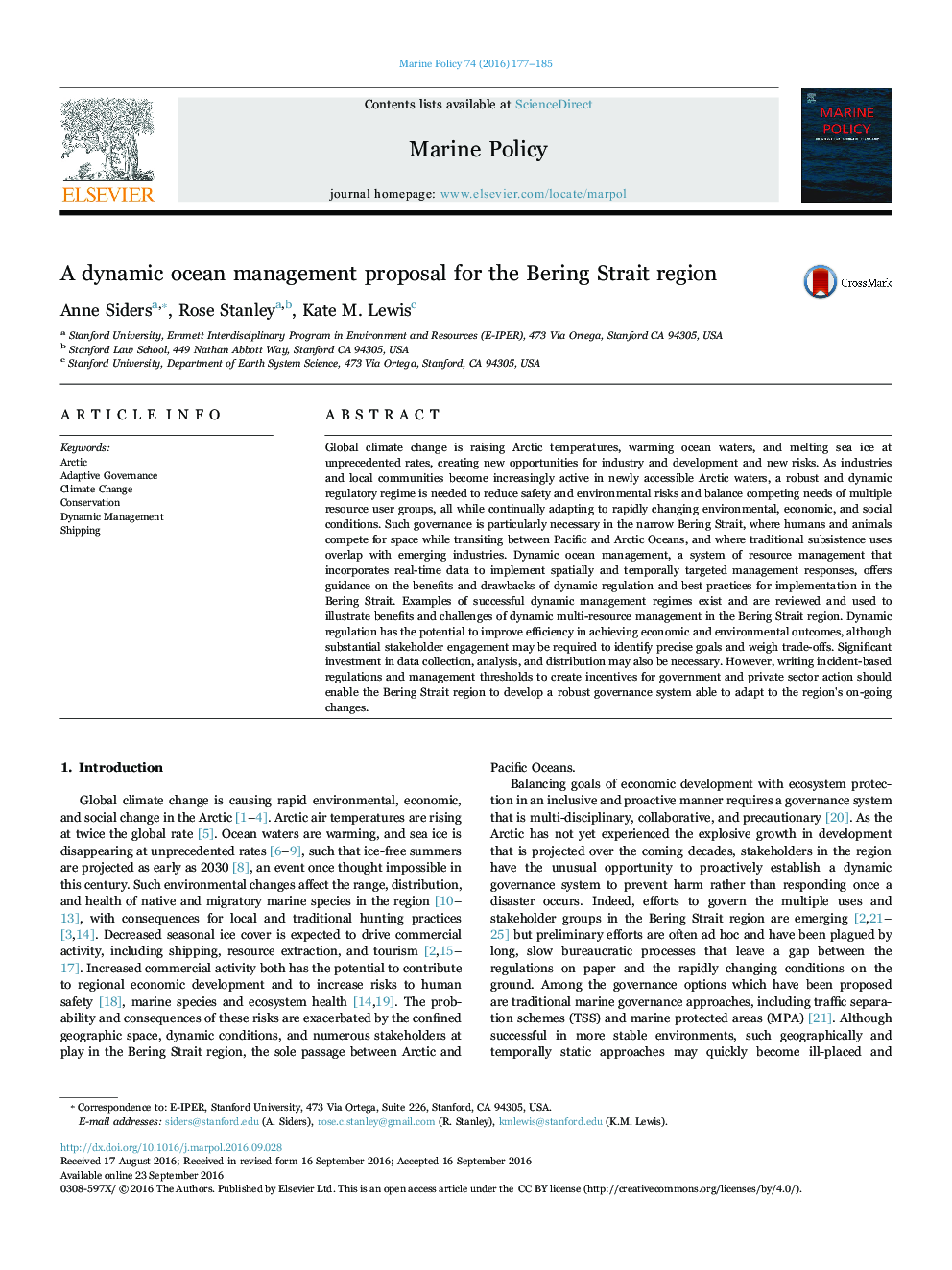| کد مقاله | کد نشریه | سال انتشار | مقاله انگلیسی | نسخه تمام متن |
|---|---|---|---|---|
| 5118198 | 1485505 | 2016 | 9 صفحه PDF | دانلود رایگان |
- The Bering Strait region is experiencing rapid environmental and social change.
- Rapid, dynamic governance is needed to promote efficiency and avoid regulatory lag.
- Application of dynamic ocean management principles balances change and stability.
- Incident-based regulatory language allows short-term dynamic response.
- Step-wise, threshold-triggered regulations promote long-term adaptation.
Global climate change is raising Arctic temperatures, warming ocean waters, and melting sea ice at unprecedented rates, creating new opportunities for industry and development and new risks. As industries and local communities become increasingly active in newly accessible Arctic waters, a robust and dynamic regulatory regime is needed to reduce safety and environmental risks and balance competing needs of multiple resource user groups, all while continually adapting to rapidly changing environmental, economic, and social conditions. Such governance is particularly necessary in the narrow Bering Strait, where humans and animals compete for space while transiting between Pacific and Arctic Oceans, and where traditional subsistence uses overlap with emerging industries. Dynamic ocean management, a system of resource management that incorporates real-time data to implement spatially and temporally targeted management responses, offers guidance on the benefits and drawbacks of dynamic regulation and best practices for implementation in the Bering Strait. Examples of successful dynamic management regimes exist and are reviewed and used to illustrate benefits and challenges of dynamic multi-resource management in the Bering Strait region. Dynamic regulation has the potential to improve efficiency in achieving economic and environmental outcomes, although substantial stakeholder engagement may be required to identify precise goals and weigh trade-offs. Significant investment in data collection, analysis, and distribution may also be necessary. However, writing incident-based regulations and management thresholds to create incentives for government and private sector action should enable the Bering Strait region to develop a robust governance system able to adapt to the region's on-going changes.
Journal: Marine Policy - Volume 74, December 2016, Pages 177-185
